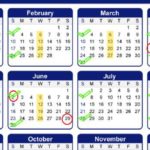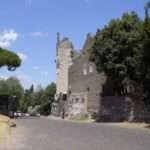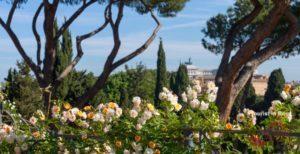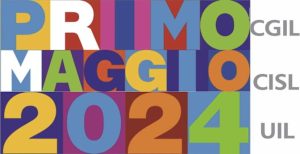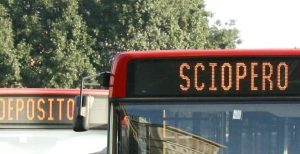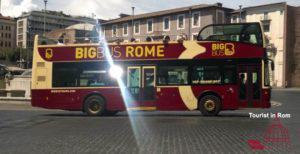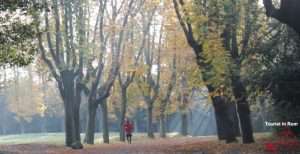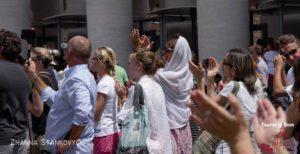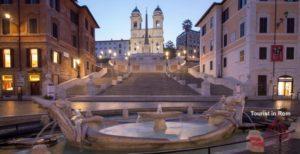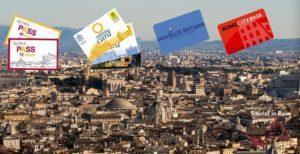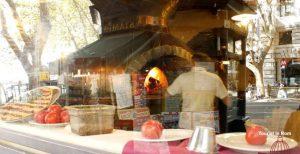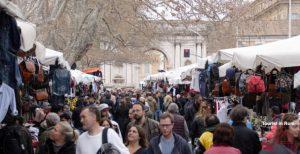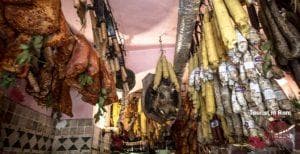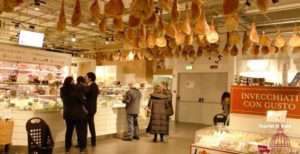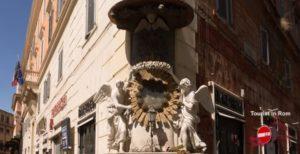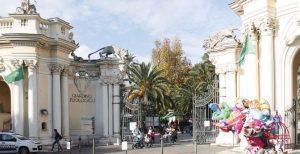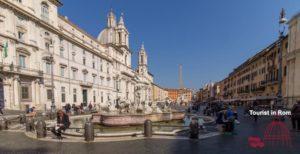A walking stick, hat and good shoes, you are ready for a city walk in Rome.
There is always a lot of talk about traffic in Rome, but in reality Rome is a green city and ideal for pedestrians. Instead of mountains, forests and lakes, Rome has hills, monuments and fountains.
Many tourists who come to Rome are not aware of this: in Rome you need a good plan and good shoes. Otherwise, you will return to the hotel on the first evening with sore muscles and blisters on your feet.
Partner-Links helfen uns dabei, unsere Informationen kostenlos bereitzustellen. Für abgeschlossene Buchungen erhalten wir eine Provision – ohne Mehrkosten für Sie! Mehr
Partner links help us to provide our information free of charge. For completed bookings we receive a commission – at no extra cost to you! More
I link dei partner ci aiutano a fornire gratuitamente le nostre informazioni. Riceviamo una commissione per le prenotazioni completate, senza alcun costo aggiuntivo per voi! Di più
Walking in Rome
Imagine how the pilgrims traveled to Rome. For the most part, they went to Rome on foot along paths that were thousands of years old. And these paths still exist today. Even today, many pilgrims come to Rome from Umbria on the Via Francigena, for example.
Most of the ancient consolar roads have become expressways today, but much of the Via Appia Antica is virtually car-free.
There are also many quiet paths in the city, and the walks over Rome’s hills are quite challenging. Rome is very hilly. While Rome’s height above sea level is given as 22 meters, the seven hills of Aventine, Caelius, Esquiline, Capitoline, Palatine and Quirinal rise up to 65 meters. In addition, there is the Pincio with 61 m, the Gianicolo with 85 m and the Monte Mario with even 139 m.
Equipment
In Rome you need good footwear. There is a lot of stone pavement, the paths are uneven and full of holes. You will also need sunscreen and a hat. To get into the churches and catacombs, your clothes need to cover your shoulders and knees. You will also need a plastic water bottle. You must leave bottles made of other materials at the security checkpoints of the attractions. There are fountains everywhere in Rome where you can refill the bottle.
Rome’s parks
Surely you have heard of Villa Borghese, the large park on the edge of the city center that houses the famous Galerie Borghese museum, the Biopark and several smaller museums. But besides that, there are numerous other parks. For example, a hike from Trastevere up to the Gianicolo, possibly through the Botanical Garden, and on to Villa Sciarra and the extensive Villa Pamphili is worthwhile. To the north of Rome, Villa Ada has a northern flair, and to the south, the Appia Antica Park and the Park of the Aqueducts offer beautiful walking routes. For details, see our article on Roman parks and villas.
Rome’s alleys
Streets and alleys have evolved over the millennia and follow no discernible logic. Twisting alleys wind around ancient remains and medieval palaces. Builders and architects wanted to impress with their power and art, and they strove to create surprise effects. So you walk through a small alley and suddenly you are in front of the Trevi Fountain or in Piazza Navona. We describe the routes from the Ghetto to Castel Sant’Angelo and further through Piazza Navona to the Spanish Steps in our article on the Field of Mars, today the center of Rome.
Guided city tours
If you want to learn more about history and culture during your walking tour, the city tours in the center are worthwhile. There is a wide selection of guided tours at Getyourguide.
Around the Colosseum
Beautiful walking routes start at Piazza Venezia. We particularly like two routes:
Archaeological Area, Caelius and Oppius
The route starts at the entrance to the Imperial Forums by the Column of Trajan. You will walk from the Imperial Forums to the Roman Forum to the Palatine and visit the beautiful viewpoints there. More information about the Forums and Palatine. If you have a reservation, you will visit the Colosseum afterwards. Otherwise, continue directly to Caelius Hill and then to Colle Oppio. Information on Caelius and Oppius.
Capitol, Aventine and Testaccio
The second route goes from Via dei Fori Imperiali to the Capitol with its beautiful viewpoints and then on to the famous mouth of truth, the bocca della verità. Then they climb the Aventine to visit the romantic orange garden and the ancient churches. After a look through the keyhole at the residence of the Order of the Malters, descend to the Testaccio and taste some delicacies in the market. Capitol, Aventine and Testaccio route.
The Seven Churches Pilgrimage Way
The path is based on a tradition of the Romans to make a Sunday excursion with picnic to the pilgrim churches. Today, part of the path is still traffic-free, the Via delle Sette Chiese from the Basilica of St. Paul Outside the Walls to the Catacombs of St. Sebastian. The Seven Churches Pilgrimage Way
Via Appia Antica
The Via Appia Antica has been an open-air museum for more than a hundred years. The park is ideal for long and extensive walks.
The Via Appia was one of the most important military roads of the ancient world. It led from Rome to Brindisi and from there people embarked to Greece. Large parts of the road are still preserved today. In Rome, the Via Appia Antica leads from the Porta di San Sebastiano to Ciampino. It is traffic-calmed from the mausoleum of Cecilia Metella.
On the Appia Antica you can walk on level ground for about 15 kilometers to Santa Maria delle Mole and from there take the train back to Rome.
In Rome, the best way to reach the Appia Antica is by bus 118 from Piazza Venezia, bus 218 from San Giovanni, or on foot from the Circus Maximus past the Baths of Caracalla and along Via di Porta San Sebastiano. Catacombs
The Monumental Cemetery Verano
A small jewel is the monumental cemetery Verano. It was designed in 1807-1812 by Giuseppe Valadier, who also created Piazza del Popolo. On 83 hectares, many important families have their final resting place here and many famous people rest here, including Bud Spencer.
The necropolis built into the landscape is located behind the Basilica of St. Lawrence. You can reach it by streetcar lines 3 and 19.
The Verano, with its buildings and inscriptions, lends itself to studies of contemporary and cultural history, and you can walk for hours without getting bored. There are hills and valleys, and on climbs and stairs you can really work out. The engraver Giovanni Battista Piranesi may have been inspired by these images in his imaginative depiction of an ancient necropolis on the Via Appia.
It is easy to get lost in the cemetery and it often happens that people do not find the exit in time. Therefore, there is an emergency number +390649236252 during the opening hours and +390651693340 after the closing, besides, of course, the general emergency number 112.
To the sea
If you want to go to the sea, take the railway line from the Pyramid to Ostia. It leads past Ostia Antica to the sea and then runs along the coast. So you can easily come to the sea and walk along the beach, eat a good fish and lie down in the sun.
In Italy, the seashore is always open to the public. You can also walk along the shore in front of bathing establishments. For access to the sea, there are free access outside the establishments. Read also A day trip to Ostia

